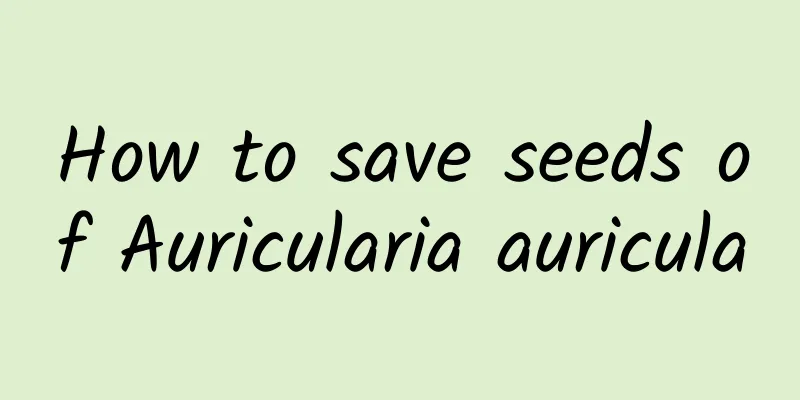Soilless cultivation of Chlorophytum

What is soilless cultivationSoilless cultivation, literally speaking, is a method of growing plants without soil, but using other things instead of soil. Generally it is hydroponics, aeroponics, and substrate cultivation. Some people may ask, how can plants have sufficient nutrients without soil? Don't worry, we can use artificially prepared culture solution to supply plant nutrients, which is more scientific. There are two main types of soilless cultivation of spider plants. One is solid, which is to lay the bottom of the pot with stones and other particles; the other is hydroponic. Today we mainly talk about the first type of cultivation using solid substrate. Method of soilless cultivation of spider plantsMatrix selectionWhen cultivating spider plants in soilless culture, you can choose peat, river sand, sphagnum moss, vermiculite, expanded clay and other materials with good air permeability as the substrate. It is both beautiful and suitable for the growth of spider plants. Container selectionWithout the turbid soil, the spider plant's white and plump roots can be perfectly presented. Therefore, it is best to choose transparent glass containers to improve the ornamental value. You can appreciate the leaves and roots at the same time, killing two birds with one stone. Treating ChlorophytumBefore carrying out soilless cultivation, our protagonist - spider plant must be processed in advance. After digging it out of the soil, first wash the dirt on the roots with clean water; then cut off the old and rotten roots, leaving intact fibrous roots. In addition, you should clean up the diseased leaves, wash the leaf surface and keep it intact. Preparation of nutrient solution1. Add 0.354 g of calcium nitrate, 0.396 g of calcium sulfate, 0.408 g of potassium dihydrogen phosphate, 0.074 g of potassium chloride, 0.493 g of magnesium sulfate, and 10 ml of trace element mother solution per liter. 2. Add 1.8 grams of calcium nitrate, 0.187 grams of ammonium sulfate, 0.62 grams of potassium dihydrogen phosphate, 0.54 grams of magnesium sulfate, 0.62 grams of potassium chloride, and 0.0278 grams of ferrous phosphate per liter. When preparing, mix and dissolve them first, then dilute to 1 liter with water and stir evenly. If flower lovers find it troublesome, they can go to the flower market to buy prepared nutrient solution! Specific steps for soilless cultivation of spider plantsIn late spring and early summer, put some water-permeable and breathable expanded clay at the bottom of the pot, with a thickness of 3 to 4 cm. Then place the treated spider plant in the center of the pot, add the solid substrate of your choice until it is 80% full, and gently press it with your hands. Finally, cover the surface with a layer of fine clay or sphagnum moss to enhance the appearance. Maintenance and management of Chlorophytum soilless cultivationilluminationChlorophytum likes a sparse shade environment, so it should be ensured that the spider plant has 4 hours of scattered sunlight every day. Be careful not to be exposed to direct strong light, otherwise the leaves will turn yellow. MoistureAlthough spider plants can be grown hydroponically, we are using substrate culture this time. Therefore, when watering, you only need to keep the substrate moist, but not too wet to avoid root rot. You can sprinkle water on the leaves. The finer the water droplets, the better, to keep the leaves upright. Nutrient solutionAfter the spider plant is cultivated in soilless culture, the nutrient solution must be watered thoroughly for the first time, and then the nutrient solution should be added as appropriate according to the specific growth conditions. In winter and spring, spider plants grow slowly, so you can add nutrient solution every 5-6 weeks. In summer and autumn, they are growing seasons and require a lot of fertilizer, so you can increase the frequency of fertilization and water them once every 10-15 days. Now that you have learned the solid substrate cultivation method of spider plants, can you also try hydroponics of spider plants ? Then come in quickly, the beautiful spider plants are waiting for you! |
<<: Picture appreciation of calla lily
>>: How to care for and propagate the dense-leaved lotus
Recommend
What month is suitable for planting lotus root?
When to plant lotus root Lotus roots are generall...
When is the best time to plant strawberries?
Strawberry is a kind of berry that many consumers...
How to make your own seedling box
Materials needed to make a seedling box Several m...
A few mung beans, a kettle, and non-toxic mung bean sprouts will grow in 3 days!
Throw the beans into the kettle and they will spr...
How long does it take for dahlias to wither?
1. Flowering period The flowering period of a sin...
Can’t grow flowers on a closed balcony? Nonsense, growing these is more beautiful than an open-air garden!
Closed south balcony The enclosed south balcony h...
How to grow and water green radish
As a common indoor plant in homes, green ivy is w...
Flammulina velutipes cultivation technology
There are many kinds of edible fungi in China. Th...
How does the hibiscus survive the summer?
The hibiscus has a weak root system. Whenever the...
What to do if African jasmine leaves fall off
Reasons why African jasmine leaves fall off Unsui...
Is red leaf cordyceps suitable for growing at home?
1. Is it suitable for home breeding? Because of i...
How many years does a lemon tree bear fruit?
Introduction to Planting Lemon Trees Lemon prefer...
How to promote the flowering of black orchid
1. Varieties There are many varieties of Mo Lan, ...
Does Milan spray water every day in spring?
1. Do I need to spray water every day? During thi...
Spring grass blooming
When does spring grass bloom? The flowering perio...









